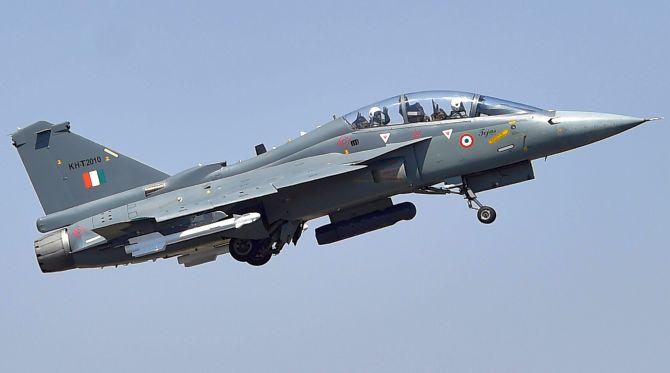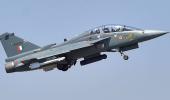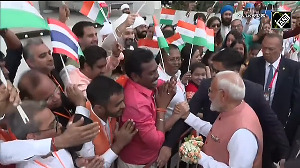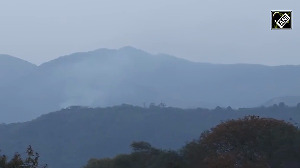'Today, if we are ready to move forward in developing a next-generation fighter, it is because the Tejas programme gave us a core critical mass.'
Ajai Shukla reports.

The Indian Air Force will procure 350 more aircraft over the next two decades, including a fleet of Tejas light combat aircraft, IAF chief Air Chief Marshal Rakesh Kumar Singh Bhadauria, said on Wednesday, September 8, 2021.
All efforts, he added, would be made to procure combat aircraft from indigenous sources.
Addressing the Society of Indian Defence Manufacturers -- the apex defence and aerospace industry body -- in New Delhi, ACM Bhadauria said, "The 123 Tejas fighters on order, including 83 improved Mark 1A fighters, will make the core of the aerospace industry in terms of budget and ecosystem."
The Tejas LCA, he added, has redefined military aviation in India. "The level of automation achieved by the support of the aerospace industry has given the strength to act fast, decide fast and react fast."

ACM Bhadauria, a former test pilot, has moved away from the IAF's decades-old penchant for importing aircraft, such as the French Rafale fighter. He has instead firmly backed the prime minister's Aatmanirbhar Bharat (self-reliant India) initiative. He and his staff used the Society of Indian Defence Manufacturers function to explain how the Tejas project has galvanised indigenous fighter production.
Backing ACM Bhadauria with facts and figures was Girish Deodhare, head of the Aeronautical Development Agency, which was set up to oversee the Tejas LCA project, but is now also involved in designing and developing the next-generation Tejas Mark 2 as well as the fifth-generation Advanced Medium Combat Aircraft, which is on the drawing board.
Deodhare presented an incremental development plan for indigenous manned combat aircraft, in which the current Tejas Mark 1 would be followed by the improved Mark 1A, the AMCA Mark 1, the navy's 'twin engine deck-based fighter' and finally the AMCA Mark 2 by 2035.
ACM Bhadauria's staff officer, Air Vice Marshal N Tiwari, rebutted criticism that the Tejas LCA had taken too long to be developed. AVM Tewari said the first 4-5 years in the Tejas fighter's design and development cycle went into setting up testing and production facilities that are essential for aircraft development programmes.
"Today, if we are ready to move forward in developing a next-generation fighter, it is because the Tejas programme gave us a core critical mass," said AVM Tiwari.
AVM Tiwari, who has flown more than 200 sorties as a Tejas test pilot, said the LCA was ambitiously conceived as a technologically state-of-the-art fighter. Its unstable design, quadruplex flight control system, computerised utilities management system and an air frame made of composite materials make it contemporary even today, he said.
An unstable design makes a fighter aircraft more manoeuvrable than one with a stable design, since stability tends to resist sharp manoeuvres. However, an unstable design requires a highly reliable flight computer to prevent the fighter from going into an unstoppable spin.
"When I get feedback from the Tejas squadron today, the pilots are uniformly happy with the way the plane flies, and how well integrated it is for the pilot," said AVM Tiwari. "We have a fighter that incorporates the best of the Russian and the Western fighter design philosophies."
He gave the example of the autopilot, which, in Russian fighters, allows a disoriented pilot to return his fighter to level flight by simply pressing a 'level mode' button -- a facility that Western fighters, such as the Mirage 2000, do not have. This feature has been incorporated into the Tejas fighter.












 © 2025
© 2025